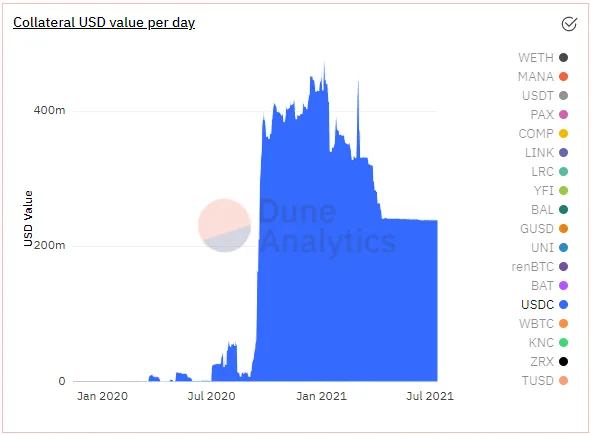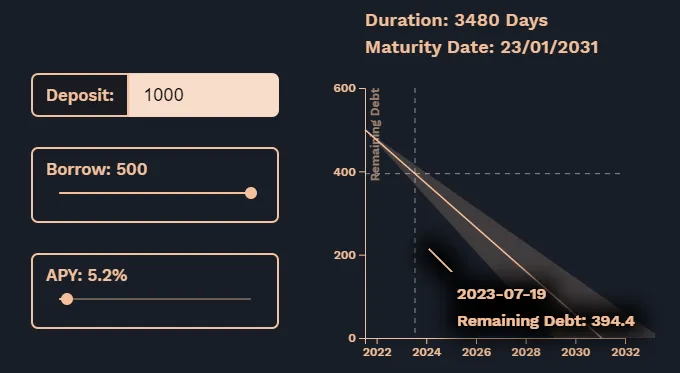Lending Protocol.
Welcome, premium subscribers! Thank you for subscribing. What will be shared today and the days ahead are alpha from our Economics Design's researchers. Please keep these mails secret and do not share them with any one because these alphas are confidential. Enjoy your reading.
TLDR below. This is not financial advice.

What Is Alchemix?
Alchemix calls itself a future-yield-backed synthetic asset platform. You receive yield from the collateral capital. To understand how Alchemix works, check out our detailed analysis. In this article, we focus on comparing stablecoins that are backed by stablecoins.
Question: Why Use A Stablecoin To Back A Stablecoin?
Why would anyone deposit a stablecoin ($DAI) to borrow less stablecoin ($alUSD)? We compare some of the strengths and weaknesses of the Alchemix protocol below and compare it with Maker.
Strengths
-
No kind of stability fees (as compared to MakerDAO)
-
No kind of liquidation fees
-
Yields are generated from collateral automatically
-
Simple and easy to use (not as complicated)
Weaknesses
-
Opportunity cost of collateral
-
$alUSD, the stablecoin does not have much utility for it to gain traction
-
$ALCX tokens currently have no utility other than governance
-
Much more centralised compared to other protocols
We note that the main value proposition that Alchemix brings for its users is that a loan will repay itself over time. In general, users pay less fees and do not have to worry about being liquidated from their collateral. Traditionally, users of $DAI deposit their stablecoin in a lending protocol such as Compound or Aave and earn interest. With Alchemix, they can expand their capital base to either leverage on their positions or finance a self-repaying loan.
Comparison: Alchemix vs Maker
Which protocol mints a token using the same token of value? Why?
To put things into perspective, we compare Alchemix to a similar form of protocol. This protocol should also accept asset as collateral to mint another asset of the exact same value. Both assets should remain on the same blockchain system. BTC and wBTC do not count because BTC exists on the Bitcoin blockchain network while wBTC exists on the Ethereum blockchain network.
With that in mind, we have Maker and Alchemix.
-
Maker uses $USDC to mint $DAI
-
Alchemix uses $DAI to mint $alUSD
Analysis
We look at the stablecoin collateral backing the respective ecosystems. As of 14th July 2021, they have a similar amount of ~230m worth of stablecoin in their vaults.
MakerDAO | Alchemix


Source: duneanalytics.com
In MakerDAO, USDC deposits allow a user to mint $DAI. This is done via the peg stability module (PSM), which allows users to swap a given collateral type (in this case $USDC) directly for $DAI at a fixed rate. These are used as a backstop to prevent the $DAI stablecoin from being unpegged, rather than to actually borrow $DAI. Hence, the collateral ratio to mint $DAI from USDC is 1:1 and the liquidation ratio is 100% i.e. a user does not need to manage a Maker vault.
In the case of Alchemix, $DAI deposits allow a user to mint $alUSD. The deposits serve as collateral for users to make a loan that can be used for any other purpose the user wishes, such as expanding their capital base or financing another project. Thus, it requires a higher collateral ratio of 200% in order to do so.

Example
Let us say a user has $2000 worth of collateral and wants to make a loan. They allocate 1000 $USDC into Maker and 1000 $DAI into Alchemix each for a period of 2 years. Thereafter, they repay the loan and withdraw their collateral.
Borrowing Cost/Benefits:
Maker
Via the PSM, the user will not incur any slippage and can exchange 1000 $USDC into 1000 $DAI. There is a 0.10% fee charge for doing this. Thus, the user receives 999 $DAI in exchange. After 2 years, the user can repay their loan of 999 $DAI with 0% stability fee.
Start: Use 1000 $USDC → +999 $DAI → End: +999 $USDC
Overall Cost: -1 $USDC
Alchemix
The user deposits 1000 $DAI into the Alchemix Vault and borrows 500 $alUSD. Based on the current yield (14/7/21), it stands at 5.244% APY. Note that this yield will fluctuate from time to time. Assuming this is constant, after 2 years the loan of $500 would be reduced to $394.4.

Source: alchemix.fi
The user then repays the remainder of this loan to withdraw their original collateral deposited.
Start: Use 1000 $DAI → Borrow 500 $alUSD → Yield to reduce loan 394.4 $alUSD → End: +1000 $DAI + $105.6 $alUSD
Overall Benefit: +105.6 $alUSD
From the above, we see that the total borrowing cost incurred for the user borrowing from MakerDAO is 1 $USDC while they actually gained 105.6 $alUSD for borrowing from Alchemix.
Alternative
The user has several alternatives for how to use their original $USDC or $DAI. This can be directly staking with a centralised exchange such as in BlockFi for additional yields or in other decentralised lending/borrowing protocols such as Aave or Compound which allow for more leverage of capital.
Generally, the people that should use these platforms are
-
People who want a stablecoin loan that repays itself (Alchemix)
-
People who want to create $DAI which has more utility and is more decentralised compared to fiat-backed collateral (MakerDAO)
TLDR:
There is a use case for Alchemix users to borrow stablecoins from their collateral. However, the comparison to MakerDAO in the example might not be a good comparison because they serve a different function for their respective protocols.
In MakerDAO, $USDC deposits are used as a backstop to prevent $DAI stablecoin from being unpegged — rather than to actually borrow $DAI. In the case of Alchemix, deposits serve as collateral for users to borrow a loan that is being rewarded with yields. They sell a completely different value proposition. For now, it appears that Alchemix has no close competitors that compete for their market share. However, it would need to greatly increase utility for its stablecoin $alUSD and its governance token $ALCX for the protocol to truly shine.
